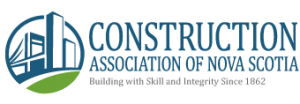Update from Health Canada’s WHMIS Current Issues Committee – WHMIS after GHS
Health Canada is changing the Federal WHMIS legislation to bring it in line with the Globally Harmonized System (GHS). An international team of hazard communication experts developed GHS with the goal of having the same set of rules for classifying hazards, and the same format and content for labels and safety data sheets adopted and used around the world.
Currently many different countries have different systems for classification and labeling of chemical products. This situation has been expensive for governments to regulate and enforce, costly for companies who have to comply with many different systems, and confusing for workers who need to understand the hazards of a chemical in order to work safely.
In Canada, the current roles and responsibilities for suppliers, employers and workers likely will not change in WHMIS after GHS.
Employers must continue to:
- Educate and train workers on the hazards and safe use of products.
- Ensure that hazardous materials are properly labelled.
- Prepare workplace labels and SDSs as necessary.
- Provide access for workers to up-to-date SDSs.
- Ensure appropriate control measures are in place to protect the health and safety of workers.
Workers will still:
- Participate in WHMIS and chemical safety training programs.
- Take necessary steps to protect themselves and their coworkers.
- Participate in identifying and controlling hazards.
However, employers will need to update their education and training of workers to include the new format of labels and data sheets. Products with new Data Sheets and Hazard Symbols may start appearing on construction sites as early as Spring 2015.
Numerous resources are available for this, including:
- A new e-course entitled “WHMIS (After GHS) for Workers“, hosted by the CCOHS. Please see the CCOHS news release (http://www.ccohs.ca/newsroom/news_releases/GHS_29September2014.html) for information about the course and how people/organizations can register.
- General questions and answers: http://www.ccohs.ca/oshanswers/chemicals/ghs.html
- Fact Sheets: http://www.ccohs.ca/products/publications/whmis_ghs/
